27 Insane Things Astronauts Have to Do

Of all the dream gigs, few are more out of this world than the only one that’s literally out of this world. In fact, I’d bet good money that every person on the planet has, at some point or another—even if only took form as the nascent and fleeting thought of a wide-eyed child—dreamt of being an astronaut. Perhaps that’s why successfully becoming a space cowboy is among the most vaunted, tough-to-achieve accomplishments on (and off) the planet.
Yes, to become an astronaut, trainees must go through all manner of insane ordeals. We’re talking bouts zero-G sickness, stints of harsh environmental training, twice-a-day fitness circuits, more seismic bodily changes than you can count on one hand, and a whole lot of time spent submerged underwater. Oh, and you have to stand out among an acceptance rate that makes getting into an Ivy look like a breeze.
That’s right: earning the right to moonwalk is certainly no cakewalk. Here’s everything that must come first. And for more on the never-ending beyond, and why it may not be so terrifying after all, check out the 30 Reasons Why the Ocean Is Scarier Than Space.
1
Sleep Through Several Sunrises Every Night
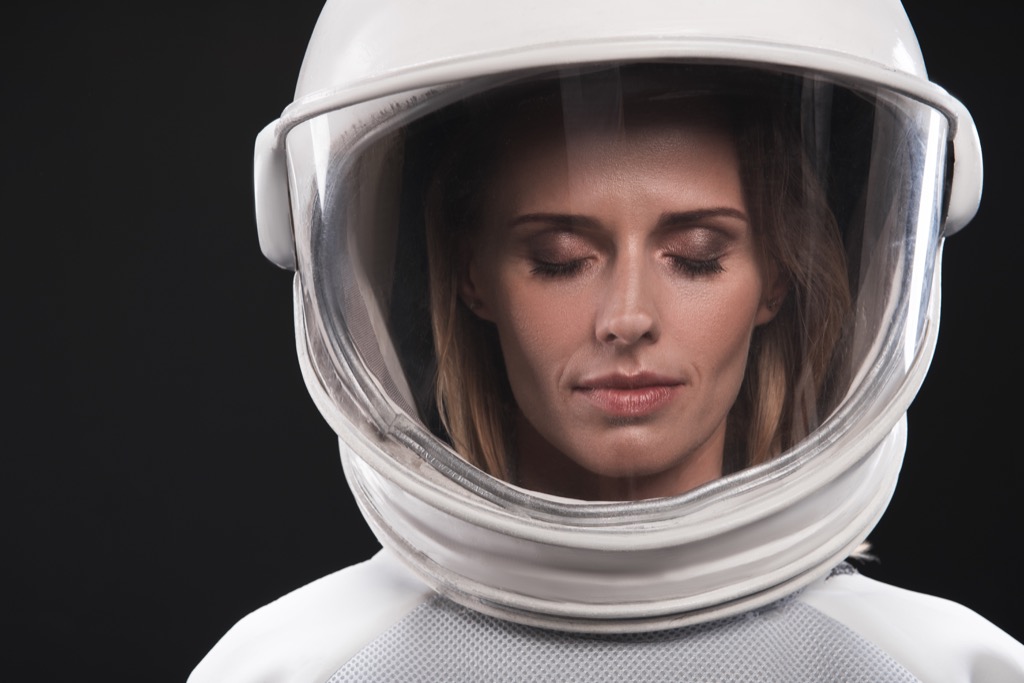
On Earth, we are naturally accustomed to a 24-hour day: sleep when the sun sets and wake when it rises. But in space, the sun can rise and set up to 16 times a day, requiring astronauts to “train their minds and bodies to maintain a 24-hour circadian rhythm,” as Hanneke Weltering writes for Space. This requires astronauts to set designated sleep and wake times, lighting instructions, and more, all in the name of sane and sound sleep. And to help you sleep well with both feet on the ground (or, rather, mattress), learn the 10 Genius Tricks For Falling Back Asleep in the Middle of the Night.
2
See Flashing Lights—Even With Their Eyes Closed

Dating back to the fabled launches of 1969, astronauts have reported seeing strange flashing lights, even when their eyes were shut. Some call it “fairy lights,” others call it “fireworks in your eyeballs,” but they’re believed to be cosmic rays that can pass through the eyelids of astronauts. It may look neat, but it probably doesn’t help space rangers sleep any better.
3
Dodge Sweat Balls

Since they have to work out more than usual (usually around two hours a day), astronauts also tend to sweat quite a bit in space, which, due to gravity, can produce floating balls of sweat that they have to tackle with a towel. Rather than rolling down their face, beads of sweat just cling to astronauts in salty blobs unless they do something about it. And to see if you’re cognitively capable of being an astronaut, check out These Brain Teasers to Find Out If You Are Smarter Than An Astronaut.
4
Tie Themselves Down to Sleep
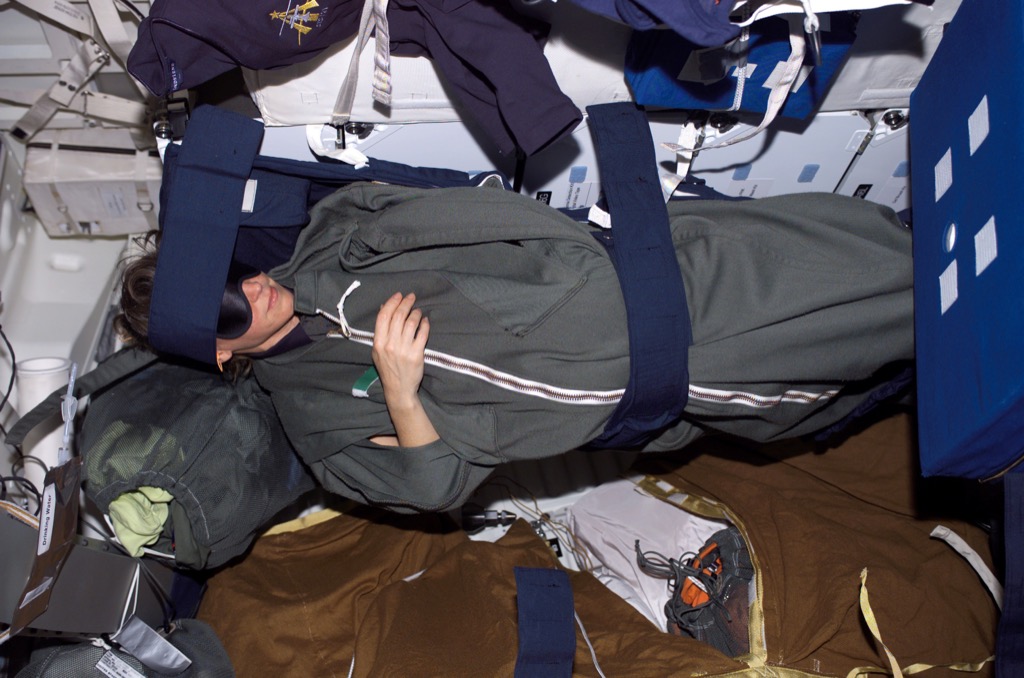
Without gravity, astronauts could sleep on the ceiling if they like. But due to safety concerns—and to avoid disorientation or phantom phantom limb (yes, you can have fake feelings of amputation)—astronauts generally prefer to tether themselves to a wall inside a sleeping bag.
5
Stop Crying
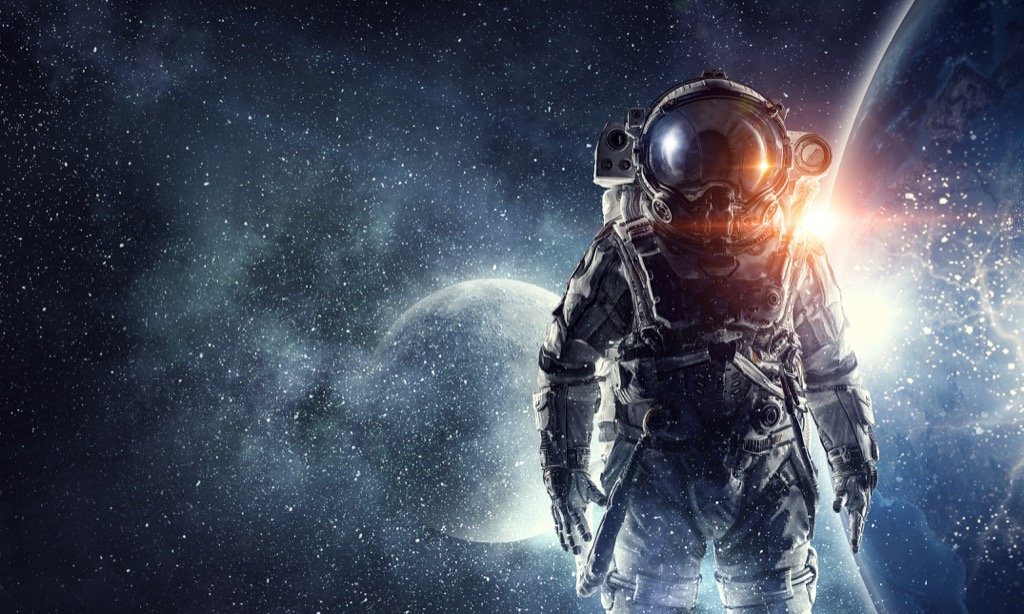
Whether they’re feeling emotional or just have a bit of dust in their eyes (though where’d the dust come from in space?), astronauts will find that tears don’t roll down their cheeks but instead just stay right there in their eyes. Apparently, it stings. A lot.
6
Quit Drinking

Carbonated drinks are forbidden in space, considering that your body doesn’t handle gas the same way it does on Earth without the gravitational assistance. But in addition to not allowing beer, NASA prohibits astronauts from drinking alcohol at all in space, out of concern that boozing up can impair decision-making and adherence to safety protocol. And if you’d like to buck this habit without the “become an astronaut” impetus, learn the 40 Science-Backed Ways to Kick Old Habits.
7
Blow Their Noses (All the Time)

Since gravity isn’t there to help with sinus drain, astronauts have to deal with constant mucous buildup, making anyone in space feel like they’ve got a minor cold at all times. The only way to fix this is to blow their nose in order to drain it.
8
Play Air Hockey With Two-Ton Pucks

In space, astronauts are able to move giant objects with a slight nudge. This may feel cool, but it can also be dangerous to have car-sized equipment knocking into each other if the astronaut loses control of it. For that reason, astronauts are trained to move large objects on an air-bearing floor that works like a massive air hockey table. They move two-ton “pucks” across the surface on a cushion of air, manipulating hugely heavy objects as if are game pieces on a board.
9
Walk Underwater For Entire Workdays

Another central piece of astronaut training is practicing day-to-day assembly and maintenance operations in a facility that mimics what it’s like to be floating in space: a gigantic pool in which astronauts float underwater for up to seven hours at a time. (Yes, the amount of time you spend at a desk, an astronaut could spend submerged.) The Neutral Buoyancy Laboratory (that’s the pool’s name) measures 202 feet long by 102 feet wide, and gets up to 40 feet deep. All told, it holds 6.2 million gallons of water, providing trainees with a massive space for practicing spacewalks and other flight procedures.
10
Swim Laps in Their Flight Suits
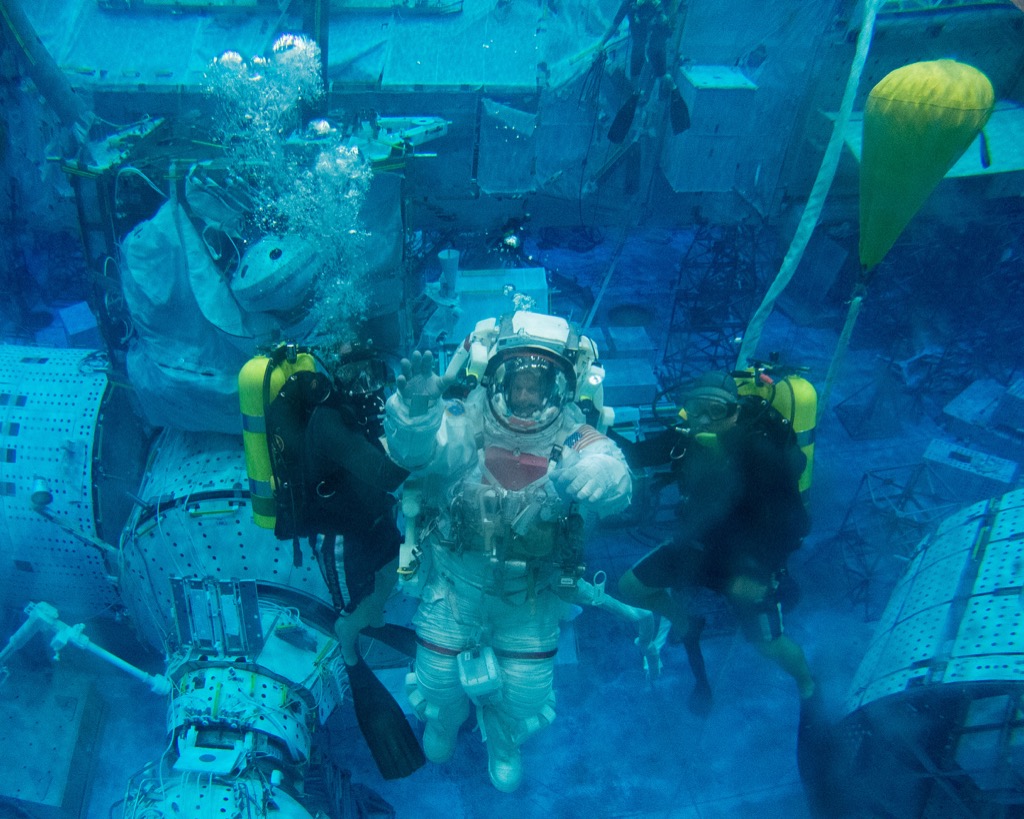
Speaking of underwater challenges, another activity that astronaut candidates are required to do early in their training is to swim three full lengths of a 25-meter pool without stopping—while wearing shoes and their 250-pound flight suit. At least NASA gives them no time limit to complete this.
11
Wear Diapers

The lack of gravity in space means the pressure an astronaut doesn’t feel pressure on their bladder like they would on earth, so they may have to hit the head without realizing it. To combat this, astronauts will sometimes wear some variation of adult diapers, such as the “roll-on cuff” that John Glenn wore in 1962. As Popular Science explains, these days, International Space Station astronauts are equipped with state-of-the-art adult diapers that can recycle liquid waste and turn it into drinking water.
12
Lose Their Sense of Smell

Possibly because of mucous build up (though theories differ), astronauts are sure to see their sense of smell significantly diminished in space. This also means that their sense of taste similarly dovetails, which is perhaps why spicy foods and hot sauce are, according to a recent episode of All Things Considered, popular among the profession. A spicy kick may be the only thing that gives astronauts the same level of flavor they’d experience on Earth.
13
Exercise Twice as Much

We earthlings don’t realize it, but our muscles are, at all times, working to push back on gravity. So even when we’re doing nothing, we’re building and maintaining muscle tissue. In space, however, astronauts lose that steady, gravity-imposed improvement, meaning that, to maintain mass, they have to hit the squat rack twice as often.
14
Watch Out for Breaking Bones

For similar reasons as the loss of muscle strength, astronauts experience a loss of bone strength, too. A study of 13 International Space Station astronauts found that their bone strength dropped by an average of 14 percent—about the same bone strength as an elderly woman with osteoporosis—during their respective six-month stays on the satellite. “If preventive measures are not taken, some of our astronauts may be at increased risk for age-related fractures decades after their missions,” said the study’s leader, Joyce Keyak, UCI orthopedic surgery and biomedical engineering professor.
15
Look Puffy in Pictures

Yes, astronauts look pretty awesome floating in space, in their reflective lenses and armored getup. But if you take a closer look, you might notice that their faces are a bit silly and puffy looking. That’s due to the lack of gravity causing fluid changes in the body. While the heart usually pumps against gravity to get blood to the body’s upper half, in space, without this push-back from gravity, the face more or less “over-inflates,” leading to a puffy face.
16
Deal with Chicken Legs

For the same reason, astronauts also find that their legs tend to look spindly and wimpy, since there’s no gravity helping move blood downward. This so-called “skinny-leg syndrome” can stick around for a while before the astronaut’s body adjusts.
17
Stop Snoring

Well, this is one way that sleeping in space is better than it is on Earth: there is no gravity pushing the pharynx of one’s mouth into their windpipe, creating sound as air flows in and out—in other words, no snoring. Story Musgrave, who went to space six times aboard NASA’s space shuttles, told IFL Science that, in all his time in space, he never once heard one of his fellow astronauts snore.
18
Take a Ride on the “Vomit Comet…”

A standard part of training for astronauts is to go in the KC-135 plane, which, by flying in a parabolic arc, provides 20 to 25 seconds of zero gravity, making them feel weightless and (for the astronauts unused to this) often feelings of sickness, giving the vehicle its “Vomit Comet” nickname.
19
…Up to 60 Times a Session

The really unpleasant part of this zero-G experience the fact that the flight exercise is then repeated 40 to 60 times per training session.
20
Learn Russian
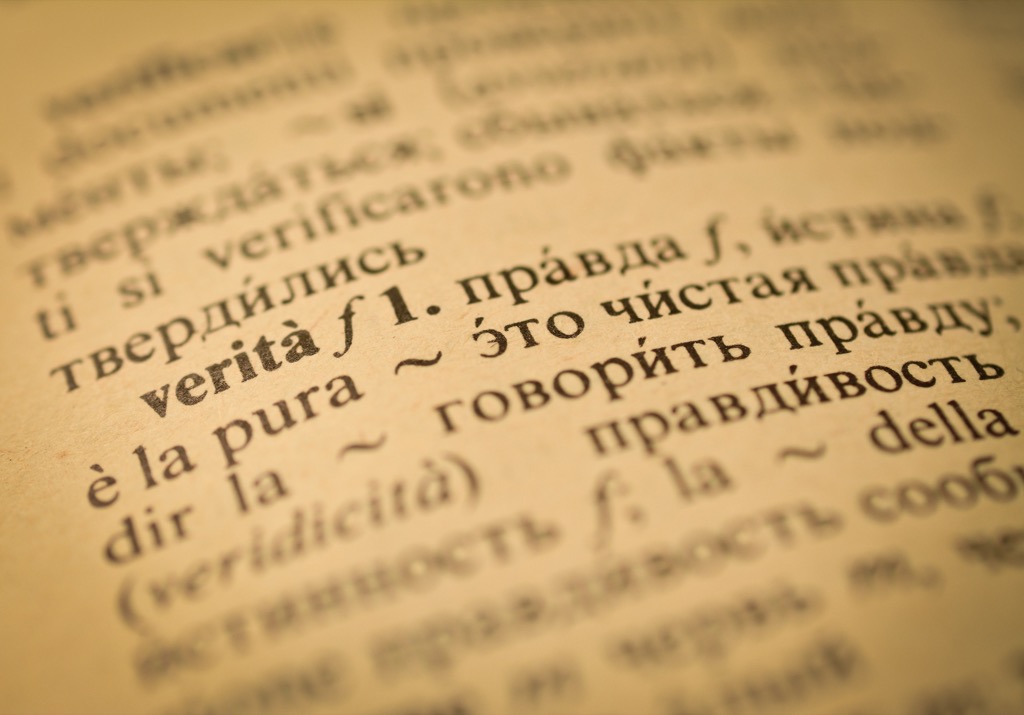
The International Space Station uses Soyuz spacecrafts, which were created for the Soviet Union’s space program in the 1960s. Operating these vehicles demands users have an in-depth, technical knowledge of Russian. For this reason, NASA puts its astronauts through an intensive Russian-language tutoring program, sometimes even sending trainees to live with host families in Moscow as they learn.
21
Terrain Familiarization

Dating back to the early days of the Apollo program, an integral part of astronaut training has been the process of familiarizing trainees with meteorite-impacted terrain—in other words, the ground one would find on the moon. The closest terrain to that in the United States is the “Meteor Crater,” just outside Winslow, Arizona. There, visitors and astronauts alike will find both a 4,100-foot-wide and 570-foot-deep crater indentation—a perfect place for astronauts to test drive rovers and run drills—and a Subway (yes, the sandwich chain).
22
Intense Survival Training

Considering all the things that could go wrong in space, astronauts have to train for a wide range of extreme contingencies. Part of the training sees astronauts trekking to rural Maine, where survival specialists drill them on plane crashes, first aid, and wilderness survival (should their vessel be thrown off course and land in inhospitable territory).
23
Become a Pilot
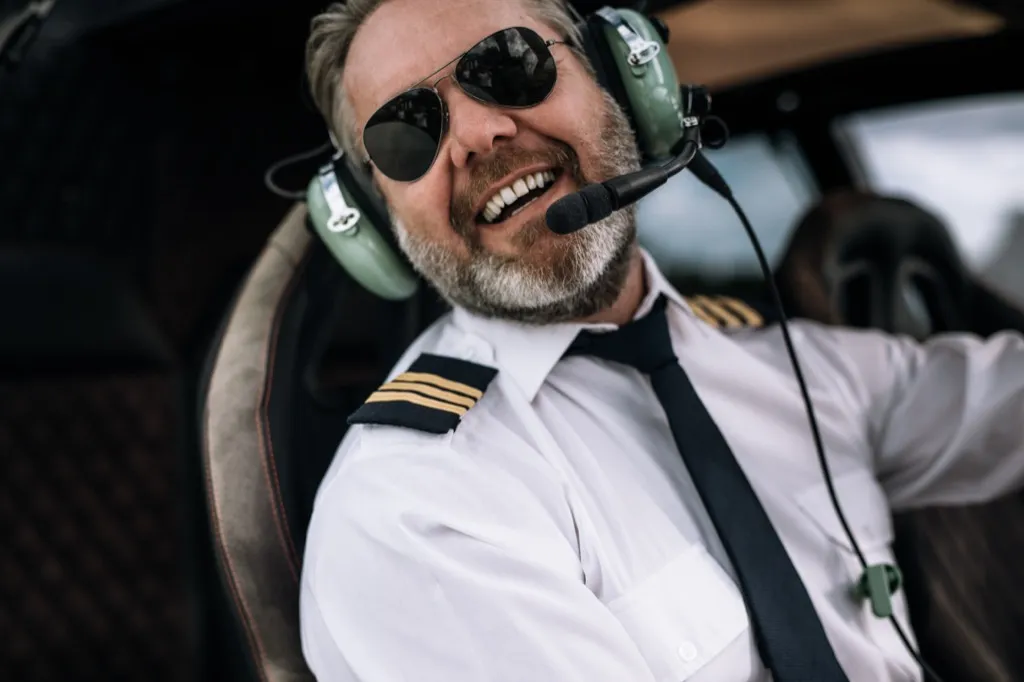
Astronauts aren’t required to be pilots, but it helps. Experience flying commercial or military aircraft or serving as test pilots is a common background for many who go into the field. Plus, NASA requires candidates to have either 1,000 hours’ worth of piloting experience in a jet aircraft or three years of relevant work experience. And for more secrets from the cockpit, learn the 15 Surprising Things Pilots Do When They’re Bored.
24
Intense Sickness and Disorientation

Without gravity—which helps a person sense what’s up and what’s down—the small organs in astronauts’ inner ears that inform them of changes in balance can get thrown off, causing nausea, headaches, vomiting, and general disorientation.
25
Beat Out a Lot of Competitors

Becoming an astronaut is extremely competitive. In 2016, NASA’s Astronaut Selection Board received a record-breaking 18,300 applicants, of which just 120 were selected to be interviewed. Just a dozen made it through to the final round to be invited to complete the two-year training program. (That’s an acceptance rate of 0.06 percent, or 1 percent of the acceptance rate of Harvard.) Most aspiring astronauts have to reapply many times before finally being accepted, if they ever are. For instance, as astronaut Clay Anderson wrote in his autobiography, it took him 15 tries before finally getting through.
26
Wait (and Wait, and Wait, and…)

While training takes about two full years, that doesn’t mean you’ll immediately head into space once the training is complete. According to astronaut Dottie Metcalf-Lindenburger, “you usually have to wait several years to actually go into space.” This was time that she used to “maintain all of the skills you just learned while doing a desk job. You may help plan space walks, review robotics maneuvers, provide input for cockpit design, live in Russia as the NASA liaison, or help a current crew deal with a problem like water leaking into spacesuits.”
27
Go Through Toilet Training

Without gravity, you can imagine how disgusting going to the bathroom could be in space. For that reason, astronauts must get familiar with vacuum suction, which essentially works like a vacuum hose that attaches to the toilet. This requires toilets that are just four inches wide, about a third of the size that we’re used to—meaning getting used to the odd design, and better at aiming.
To discover more amazing secrets about living your best life, click here to sign up for our FREE daily newsletter!